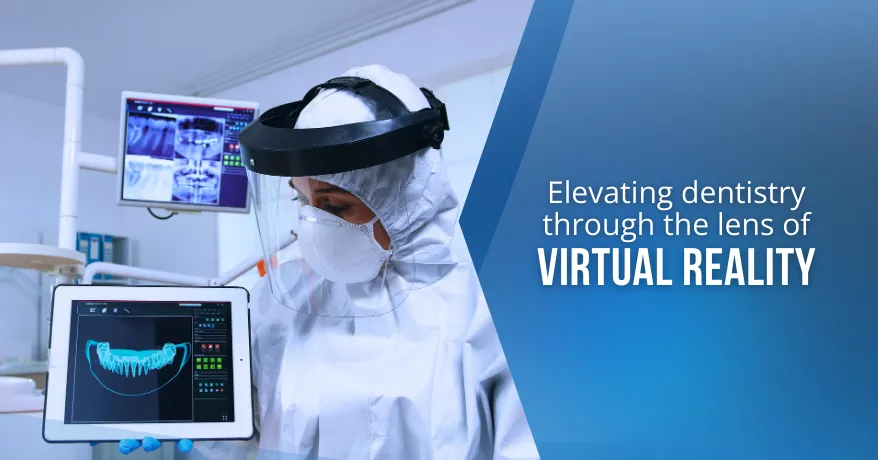Menu

Distinguishing itself from Augmented Reality (AR), Virtual Reality (VR) provides an immersive experience by isolating users from the external environment through a dedicated headset. In the realm of dentistry, VR is proving to be a transformative tool, offering unique benefits for both education and patient comfort.
Virtual Reality offers a groundbreaking solution to the limitations of traditional surgical education. By donning a VR headset, students and aspiring dental surgeons can transcend physical barriers, virtually entering the operating room (OR) from the comfort of their surroundings. This innovation addresses the challenge of limited access to surgical procedures, allowing students to observe and learn in real-time. The use of VR cameras during surgeries enables global streaming, offering medical students an unprecedented opportunity to virtually participate in dental procedures, enhancing their learning experiences.
In a notable feat, dentistry has emerged as a front-runner in adopting VR technology. As early as 2015, Nobel Biocare showcased the potential of VR by hosting the first dental surgery filmed through this immersive medium. This milestone allowed observers to virtually assist and gain insights from the surgeon’s perspective, setting a precedent for future applications. Remarkably, the dental field has outpaced other medical specialties in integrating VR into educational practices.
Beyond its educational benefits, VR has the capacity to elevate the empathetic skills of dentists. Simulations designed to immerse practitioners in the perspectives of their patients or challenging scenarios contribute to a more empathetic and patient-centered approach. By allowing dentists to step into the shoes of those they treat, VR simulations contribute to building a deeper understanding of patient experiences and fostering improved communication between practitioners and patients.
Dental anxiety is a common challenge for dentists who use traditional methods like talking, relaxation, or hypnosis to help patients feel less anxious. These methods aim to make dental visits more comfortable. Studies have found that people who are generally more anxious tend to feel more nervous and experience more pain during dental procedures. Sometimes, doctors also use medicines to help manage anxiety. These can include drugs before the procedure, sedation during the treatment (like laughing gas or conscious sedation), or even general anesthesia.
VR creates a super realistic 3D world using sights, sounds, and even smells, helping patients escape from the real world. By giving patients things to see and hear, VR can distract them from any uncomfortable feelings during dental procedures. Some studies even suggest that VR can be a good alternative to traditional pain relief methods, whereas another study has shown that VR might be more effective than traditional pharmacological analgesia.
Virtual Reality is reshaping the landscape of dentistry, offering unparalleled opportunities for education and patient care. From live-streamed surgeries to empathy-building simulations, the adoption of VR in dentistry represents a significant leap forward. As the technology continues to evolve, its potential to revolutionize dental education and enhance patient experiences remains a promising aspect of the ever-evolving intersection between healthcare and immersive technology.


| PRODUCTS | QTY | PRICE | VALUE in INR |
|---|
| PRODUCTS | QTY | PRICE | VALUE in INR |
|---|